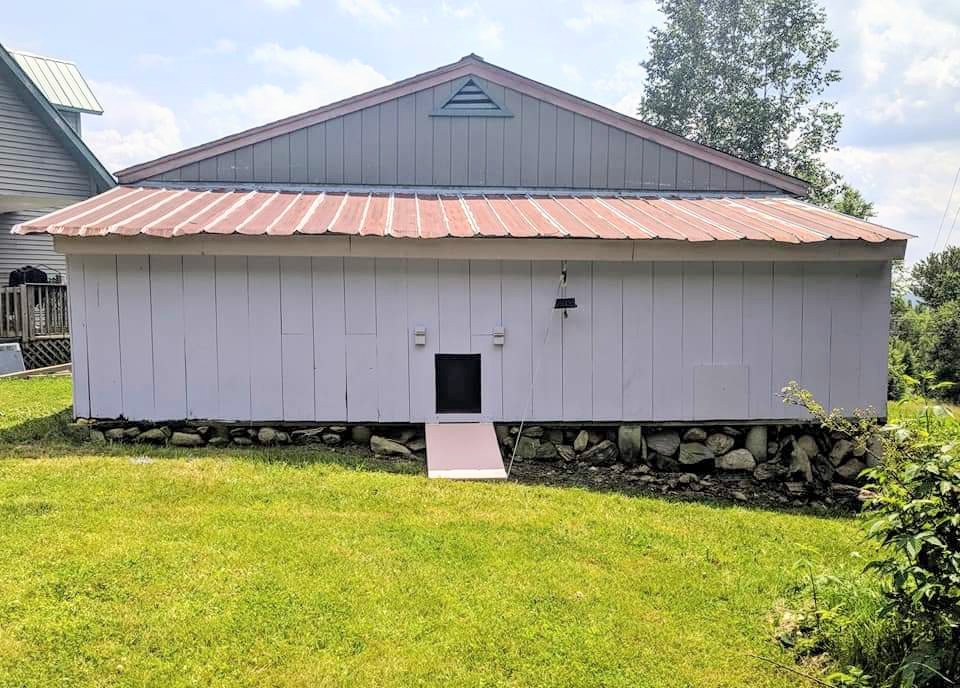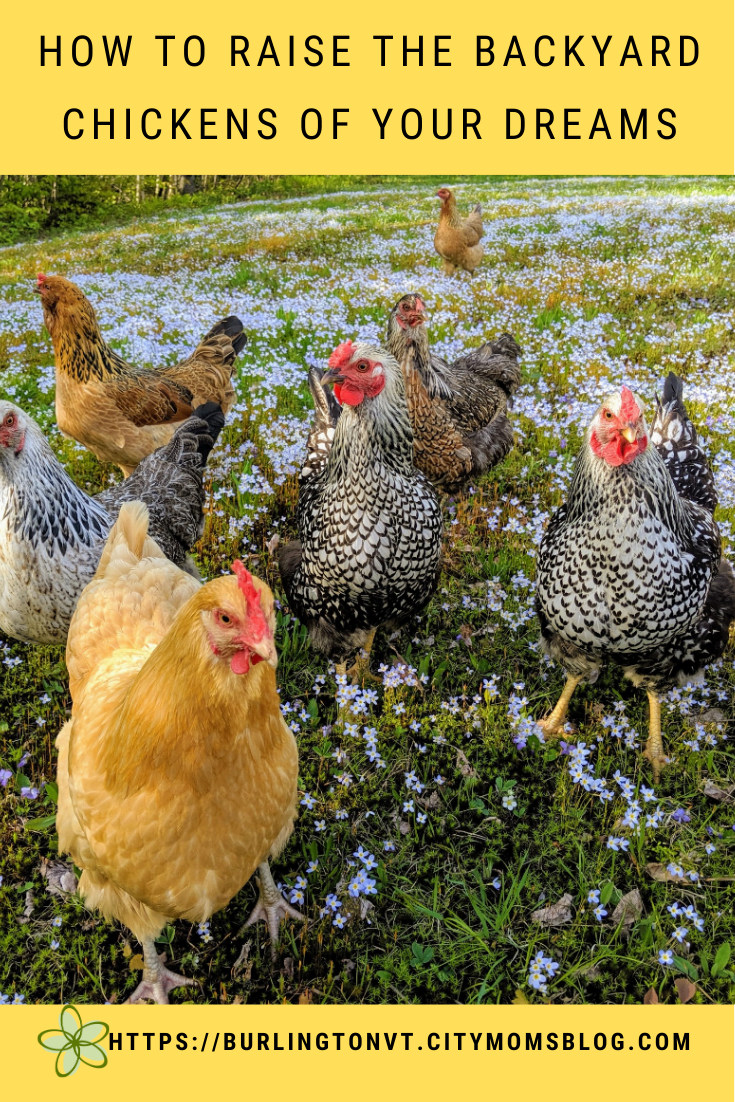One, two, over easy, sunny side up? This is a question I ask my family most mornings. Why? Because we have a coop full of feathery friends who produce the most amazing eggs every day. Do you want to get into raising backyard chickens? Read on to see if it’s something your family would benefit from and enjoy.
 Why raise backyard chickens?
Why raise backyard chickens?
Chickens will provide you with the freshest, most delicious eggs on almost a daily basis. Adult hens lay about two eggs every three days, on average. If you’re a cook and baker like I am, these eggs are like pieces of gold in the kitchen. Their bright orange yolks put a smile on my face every time I crack open an egg. Oh, and the double yolkers you get when chickens first start laying, just make any day better.
Chickens will start laying, on average, when they are around 6 months old, and start to slow laying around 2-3 years, depending on the breed. They will lay through spring, summer, and into fall as long as they have 12-14 hours of sunlight daily. We even get eggs periodically in the winter.
Besides providing delicious and nutritious eggs I find the chickens to be very entertaining. I had no idea when we started raising chickens that I’d have a flock of chickens following me around whenever I go outside. They will join us by the fire or at the table when we eat outside, just like the dog. With the dog, in fact.
 Before diving into raising backyard chickens, here are some things to consider:
Before diving into raising backyard chickens, here are some things to consider:
- Where you live?
- Do you have enough space for a coop and a run if you can’t free range?
- Do you live in an area where chickens are allowed?
- Check with your town and/or housing association before starting. Some places might have a limit on how many chickens you can raise.
- Daily cleaning of the coop isn’t the most pleasant job but needs to be done. Luckily, you can just scoop the poop and shavings into your compost pile.
- You will also need to find someone reliable who can take on your daily chores if you spend a night or more away from home.
We find that chickens take up no time. For us. they are really easy to take care of and the eggs are worth any effort. You just need to remember to wash your hands each and every time you do anything chicken-related because chickens can carry salmonella.
 How many backyard chickens you raise depends on how many you can have in your area, how many eggs you’re looking to produce, and how much space you have.
How many backyard chickens you raise depends on how many you can have in your area, how many eggs you’re looking to produce, and how much space you have.
We have 26 backyard chickens that free range on 11 acres and sleep in a walk-in coop overnight. We collect around 18-24 eggs on most days and sell what we can’t eat ourselves. You should keep a minimum of 3 chickens since they are social and need each other’s companionship. I would not recommend getting a rooster unless you plan on hatching your own baby chicks. Roosters can become mean and territorial and may accidentally kill your chickens when first learning to mate. People recommend at least 3 square feet of floor space in the coop and 8-10 sq ft in a run or outdoor area per chicken.
You can purchase coops online or purchase materials and design your own. Inside your coop, you’ll need a roost, nesting boxes, a waterer (I recommend a heated one you can use during winter as well as year-round), feeder, and bedding (we use pine shavings).
If you are going to free-range during the day, be sure your yard or area is fenced in and free from predators. Predators include raccoons, hawks, owls, foxes, and mink. Remember, your own pets can be predators if they haven’t been exposed to chickens before.
If you don’t have a fence or don’t want one, or if you live in an area where you can’t free-range or have too many predators, then a run is the way to go. You can build one yourself or have someone do it for you.
If you are going to start with chicks and not adult chickens, you will need a few extra supplies:
- A small chick waterer.
- Chick feeder.
- Chick feed starter.
- Heat lamp (red bulb).
- A place to keep the chicks while they get bigger. You can use cardboard boxes to build an area, just make sure the walls are at least 18 inches high, and in an area free from drafts and away from other pets.
- Line the area with paper then the pine shavings. You will need to change the bedding and paper as needed. Do not use a plastic bin since the heat lamp can melt the plastic, fall, and cause a fire.
- Place the heat lamp on one side of your area so the chicks can decide to use it or not, and put the waterer and feeder on the other side. If your chicks seem too cold, lower the lamp and if they’re too hot, raise the lamp.
- Place a stick or some sort of small roost for them so they don’t perch on the waterer and feeder.
- Introduce them to the outside coop when they are around 6 weeks old.
- Research your chicken breed for more specific information.
We kept our free rangers in the coop until they were almost full size to keep them from being taken by sky predators. Cuddle with your baby chicks from the time you get them and they will make amazing friends. Just remember to wash your hands each and every time you touch them. I can not stress this enough. Salmonella germs are shed in their droppings and can easily contaminate their bodies and anything in areas where birds live and roam. Salmonella can make people very sick.
 All these things cost money, but you do end up with dozens of the most amazing eggs and a few new feathered friends.
All these things cost money, but you do end up with dozens of the most amazing eggs and a few new feathered friends.
If you are starting from scratch, chickens can cost around $500- $700 depending on materials, and if you need to hire someone to do the work for you. If you already have a shed or outdoor building you can convert to a coop, it will cost a lot less, also any building you can do yourself will save money.
Chicks themselves are not expensive but prices depend on the breed. Easter eggers or Araucana are more expensive than a couple of other breeds you’ll see because they produce bluish eggs. Barred Rock or Plymouth Rock chickens have been around forever. They are mellow brown egg layers that are hardy and tolerate the cold well. They are a great breed to start with. I’d also recommend Buff Orpingtons because they are very sweet, hardy, and cold tolerant. These breeds do well together from what we have seen. They are also dual-purpose chickens and can be used for meat. Whatever breed you decide to get, do a bit of research to be sure you aren’t putting aggressive breeds with more docile chickens or you’ll create issues in the coop.

The feed can range from $13- $25 per 30- 50 lb bag depending on it being regular or organic. If you are not free-ranging your chickens, factor in some extra cost for periodic treats like mealworms. Pine shavings range from $6-$8 in most places. You can purchase items in bulk to save some money but be sure to have a place to store extra feed where it won’t get wet, moldy, or eaten by some other hungry animal. Same with the shavings.














Friends of mine have had egg layers for a few years, I used to board my horse with them but horses are not in the picture anymore. However the chickens have the run of several box stalls during the winter complete with all their supplies – in the summer they have free range of grass covered paddocks and their coop is readily accessible from the back of the barn. Their eggs are amazing, so fresh and also the shells are very hard to crack, apparently signs of being well fed! They are amazingly friendly and also run to see me whenever I visit!